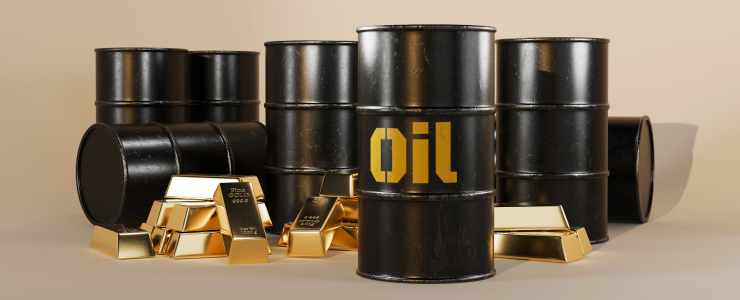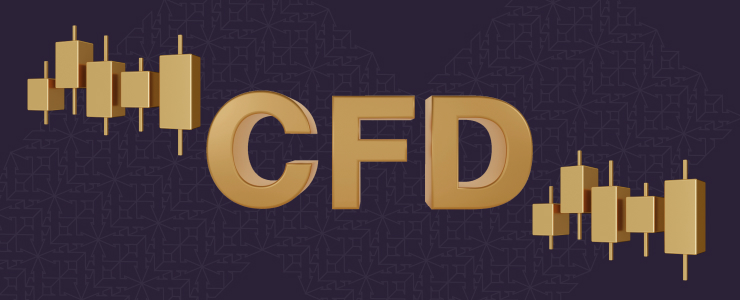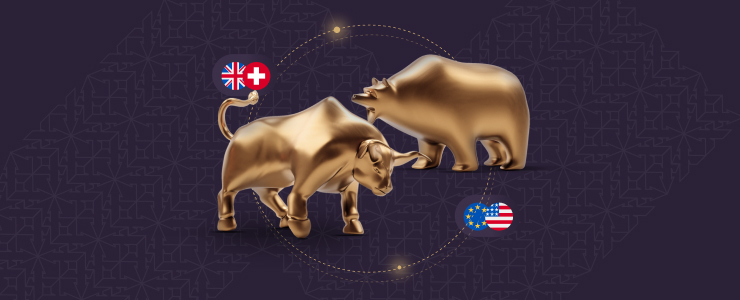Commodities are basic raw materials used to make consumer products. Specifically, they are used in the production of other goods and services, not sold directly to consumers. In trading, commodities are simple resources that can be replaced by other goods of the same type. While the quality might vary slightly, they are generally similar across producers. When traded on an exchange, commodities must meet certain minimum standards, known as a basis grade.

Understanding how commodities work
Similar to speculating on any other market, trading commodities involves buyers and sellers coming together to exchange goods. The ability to purchase and sell marketable goods at both present and future prices is the only distinction.
You can be exposed to the price of commodities in a number of ways, as we have seen. Whether you are trading in stocks and ETFs, trading futures, spot prices or options will determine the procedures you must follow when buying and selling commodities.
The key characteristic of a commodity is its uniformity; regardless of who produces it, it remains largely the same. For example, a barrel of oil, a tone of ore, or a bushel of wheat holds the same value no matter who the producer. In contrast, consumer products can vary significantly in quality and features depending on how they are made.
Commodities include anything from natural gas to oil, beef, gold and grains. The definition has recently been broadened to cover financial instruments like indices and currencies.
Commodities can be traded on specialised exchanges as financial instruments or through derivative markets such as oil forwards, wheat and gold futures as well as natural gas options. Since they often move independently of financial assets and serve as a hedge against inflation, some experts believe that at least a portion of a diversified portfolio should include commodities.

What moves commodity prices?
A variety of factors can influence commodity prices, which are determined by supply and demand conditions. For instance, the demand for oil and other energy commodities may rise as a result of a flourishing economy. Economic shocks, natural disasters and investor appetite are just a few of the factors that can affect supply and demand for harvested goods. If traders expect inflation to rise, they may purchase commodities as an inflation hedge.
Competitors
As new goods and technologies emerge, the demand for older commodities may decline. The rise of renewable energy sources, for instance, has impacted oil and gas markets, shifting demand and influencing trading trends. The market can also be affected by new businesses, particularly those with faster production lines and more effective supply chains, which will reduce costs and appeal to shareholders.
Political issues
If political events and policies affect imports and exports, they may also affect prices. For example, price increases may result from increases in import duties.
Macroeconomic picture
The demand for commodities, particularly those used in construction and transportation, is frequently reduced by a weak economy. On the other hand, rising demand from a thriving economy may result in higher prices.
Seasons
Seasonal cycles that affect harvesting and production are especially important for agricultural products. Prices typically increase when harvest projections are favourable and decrease once the market is oversupplied with goods.
Environment
Transportation and the production of natural materials can be impacted by extreme weather conditions and natural disasters. Lower temperatures, for example, may cause the ground to freeze or put the products at risk. Market prices may increase as a result of anything that affects the supply chain, such as a decline in output.
6 reasons to trade commodities
- To speculate on the fundamental value of commodities
- To trade both long and short positions in rising and falling markets
- To increase your exposure
- To open positions with shorter durations
- To hedge your portfolio
- To trade without owning the underlying asset
Traders often turn to commodities during unexpected inflation spikes, as their prices tend to rise alongside accelerating inflation. This increased interest pushes demand higher, which in turn drives up prices. As these raw materials become more expensive, the cost of goods and services typically follows. For this reason, commodities are frequently used as a hedge against the declining purchasing power of currency during inflationary periods.
Types of commodities
Generally speaking, hard commodities are those that are mined or extracted from the earth. Metals, ore and petroleum products are a few examples. Agricultural products and other grown commodities and are referred to as soft energy sources. Wheat, cotton, sugar, soybeans, coffee and other harvested goods are among them.
To describe their various applications or the procedures employed in their production, commodities can also be classified into more specialised groups.
Some of these groups include:
- Energies include conventional sources of energy like heating oil, gasoline, and crude oil.
- Metals: commodity-basis materials such as palladium, copper, gold, and silver
- Agriculture: the production of goods for human use like coffee and sugar, clothing or building materials.
- Meat and livestock: include both animals raised for consumption and products like leather and gelatin.
Unlike crops, they aren’t cultivated but are separate from traditional agricultural produce.
You can indirectly invest in the commodity market by buying and selling stocks of companies involved in the mining, extraction, development or cultivation of any commodity.
Exchange traded funds (ETFs) are funds that hold a range of assets, such as commodities or equities.
Who buys commodities?
Commodities are usually traded through futures contracts on specialized exchanges that define minimum quality and quantity standards for each raw material. For example, a single wheat futures contract typically covers 5,000 bushels. The Chicago Board of Trade (CBOT) outlines the acceptable wheat grades that qualify under the contract’s terms.
Commodity futures generally fall into two categories. The first consists of producers and end-users who use futures contracts as a hedging tool, which was their original purpose. These participants intend to take physical delivery of the underlying asset when the contract reaches expiration.
If the price of wheat drops before the crop is harvested, for instance, the farmer who plants the crop can protect himself from the possibility of losing money. In addition to having a fixed price for the wheat at harvest, the farmer can sell wheat futures contracts at the time the crop is planted.
Speculators make up the second category of commodity traders. Their sole aim is to profit from the unpredictable price movements in raw goods markets. Unlike producers or buyers, these traders have no intention of taking or delivering the actual physical asset when the futures contract reaches its expiration.

Final thoughts
Commodities are widely used, basic products and materials that don’t really differ from one another. Megawatt-hours of electricity, barrels of oil, and bushels of wheat are a few examples of commodities. Although commodities have always played a significant role in trading, the industry has grown more standardised in recent years.
Commodity trading carries risks and may not be suitable for all traders, even though diversified commodity exposure can offer a number of potential advantages. During periods of recession in the US or global economy, commodities might not do well. Commodities may also be affected by market, political, regulatory, and natural conditions when industrial and consumer demand declines. Historically, commodities have experienced periods of underperformance due to their volatility, which is comparable to that of the equity market.
Disclaimer:This information is not considered investment advice or an investment recommendation, but instead a marketing communication..




